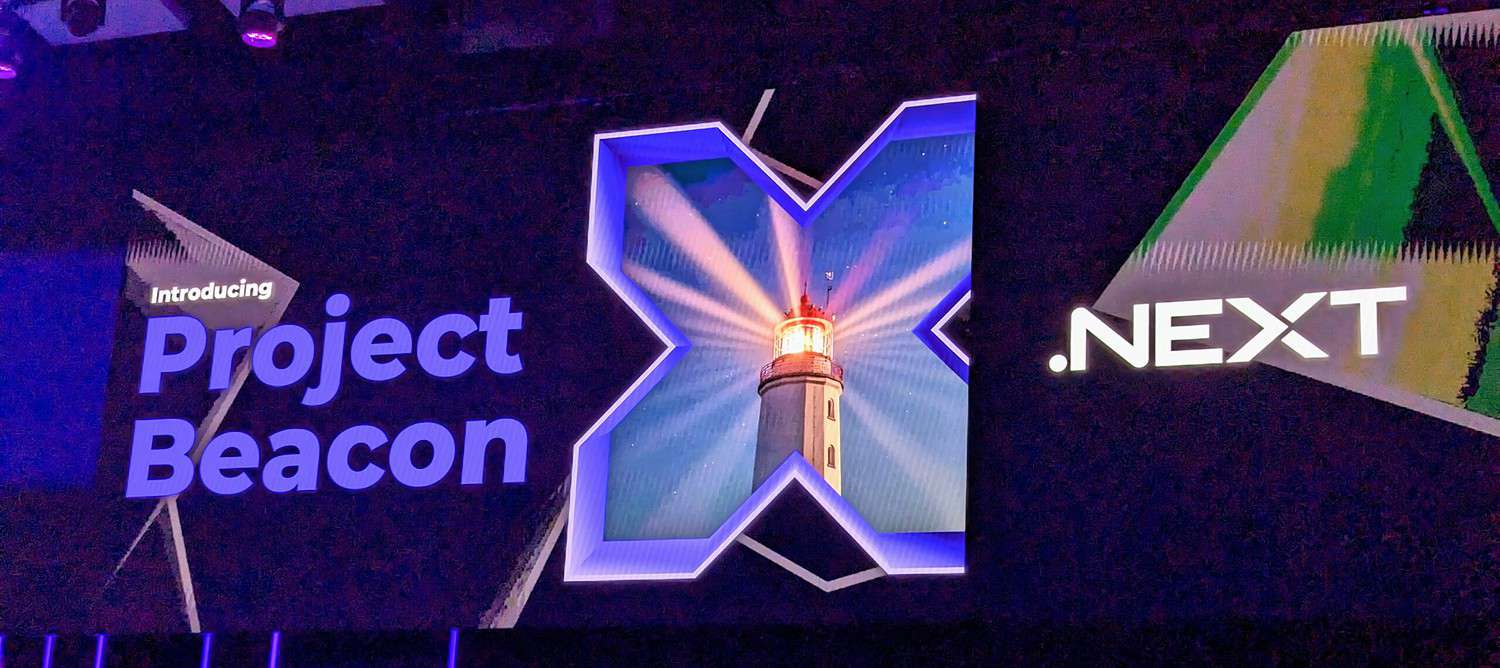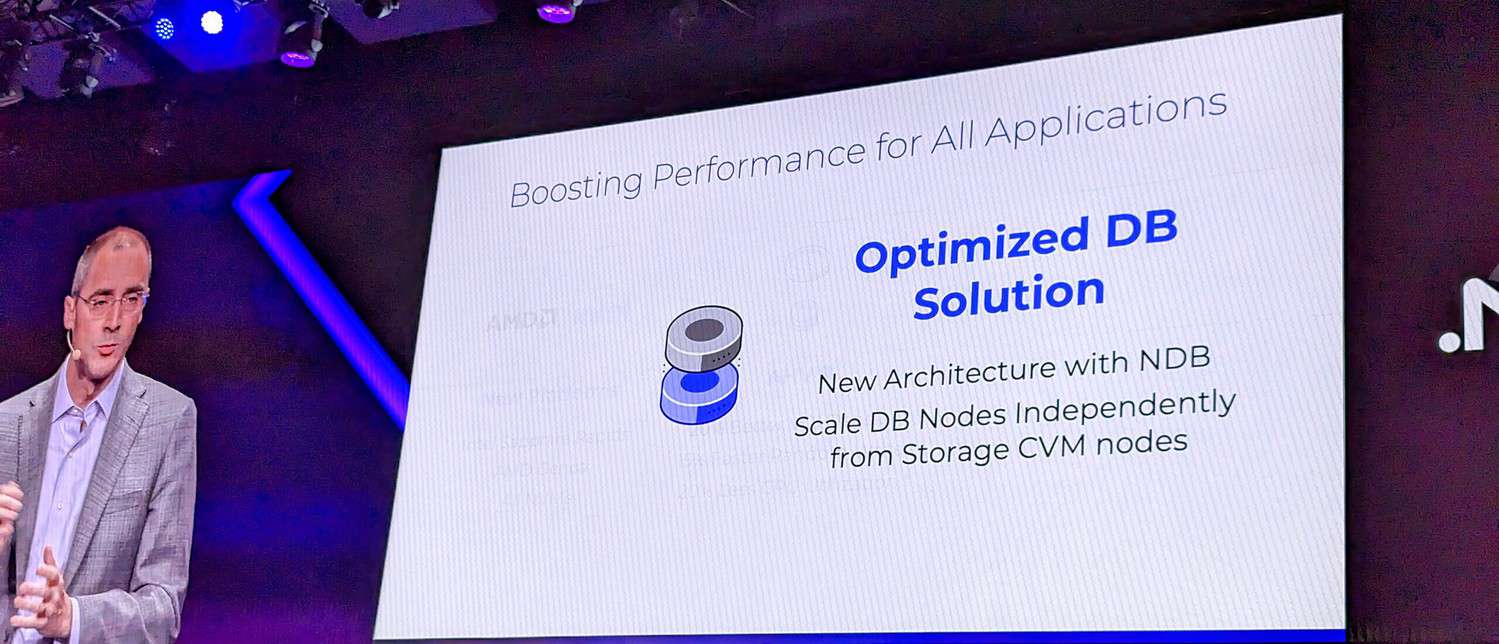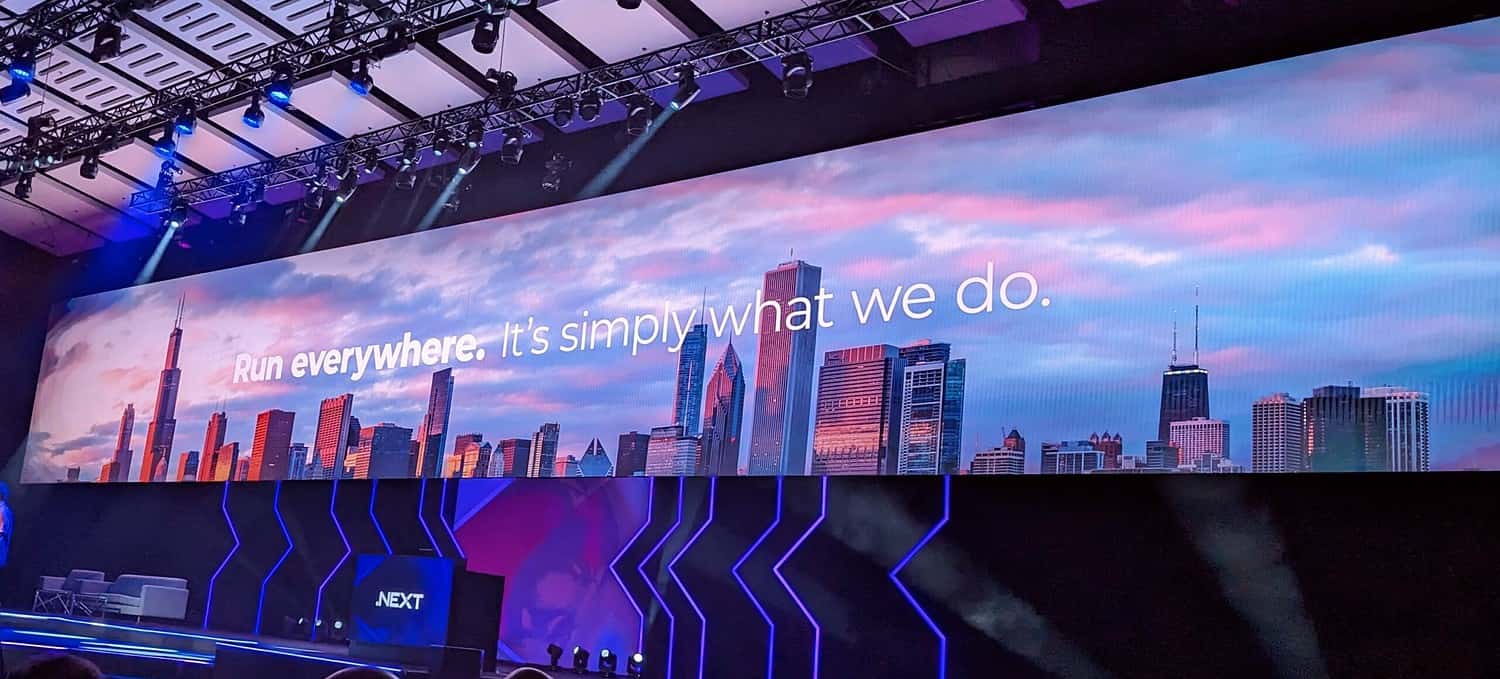Nutanix has presented its vision for the cloud; it expects to need the next 10 years to execute it to perfection. We expect the beginning of that vision in late 2023 or early 2024. After conquering the HCI market and extending the clusters to the cloud, it is now time for cloud native support.
A lot has changed at Nutanix in recent years. The founder and CEO, Dheeraj Pandey, has left and is replaced by Rajiv Ramaswami. We spoke to him before in an extensive interview. The focus before was on growing as fast as possible with big marketing campaigns, among other things; the focus was not so much on making a profit. Under Ramaswami, the vision is much more balanced and the results also have to be good.
All these changes in an organization require a new direction and a new vision. Recently, Nutanix hosted the .NEXT event in Chicago, where customers, partners, media and analysts came together. The ideal time for Nutanix to unveil its new vision and strategy.

Brief review of Nutanix
Nutanix’s route to date has been first to build and deliver a comprehensive HCI solution. First with its own hardware, then it became a software solution on hardware from major brands such as Dell, HPE and Lenovo. On just a few or on dozens of nodes (servers), you can deploy a complete Nutanix cloud infrastructure on which you can easily land and manage workloads.
After Nutanix pulled this off, the arrows were set on the cloud. Due to the large differences between all cloud providers, Nutanix decided to focus on deploying Nutanix clusters on cloud-based bare metal servers. This made it possible to link your on-prem cluster with a cloud cluster, giving you an identical environment. This has the great advantage that data can be easily exchanged, workloads can be moved, and backups and disaster recovery have become quite simple.
If you had to talk about a disadvantage it is that the Nutanix infrastructure is laid on top of the bare metal servers which comes with all its own policies, network routing and the like. Integration with other cloud provider solutions makes this a lot more difficult.
This is where Project Beacon comes in and Nutanix’s vision for the next decade. With Project Beacon, there really should be a hybrid multi-cloud, where workloads will run in the native environment of the cloud providers.
Read more: What is Nutanix and how it conquers the hybrid and multi-cloud world
What is Project Beacon?
The goal of Project Beaon is to decouple all the data of a workload from the infrastructure so that it becomes mobile and portable and can run anywhere.
Kubernetes has provided simpler container management, allowing the workload itself to be decoupled from the infrastructure and run anywhere. Also, in terms of compute, containers can be switched on and off quickly. Although there are already many flavours of Kubernetes on the market, there is an unwritten rule of not modifying the APIs so that it remains easy to move workloads from one Kubernetes environment to another. Applications that are containerized are, in essence, quick and easy to move because of this.

Where things often go wrong is with PaaS solutions on which the application depends. This can be a database server, but also caching or search solutions sometimes create challenges. So if you want to be able to move an application quickly, not only is a flexible application shell needed but also a flexible data shell. With Project Beacon, Nutanix wants to deliver that total package that allows you to run any workload in any environment at the push of a button. Or as they put it themselves, “Run everywhere.”
Nutanix Database Services (Nutanix Era) is at the heart of this vision
Several years ago, Nutanix launched a new solution, Nutanix Era, last year this service was renamed Nutanix Database Services. With Nutanix Database Services, organizations can save substantially on managing, updating and patching database servers. In fact, that is exactly what Nutanix Database Services can provide.
With 1 click of a button you can deploy a new Microsoft SQL, MongoDB, MySQL, Oracle or Postgres database, with Nutanix Database Services taking all the work off your hands. Nutanix creates a new VM within which the relevant database solution runs and takes care of patching and optimizing the OS and database server.
Currently, you can use Nutanix Database Services on-prem, on the Edge or in a Nutanix Cloud cluster (NC2). However, the intention is that you will soon be able to do this native in AWS EC2 and Azure. In the AWS or Azure customer environment, Nutanix creates a VM in which the relevant database solution runs and is again automatically managed.

Nutanix currently sees that as a first step; the next step is to also offer data services such as caching, search and streaming. This completely decouples the data from the underlying infrastructure and allows it to be moved quickly.
Nutanix then also allows migrating an AWS EC2 VM to an Azure Hyper-V VM; the VM in question is then converted to the other format in transit. Not unique, but challenging. The idea is that VMs running on-prem or on the Edge can be easily migrated to your AWS or Azure client environment.
However, when Project Beacon will see the light of day is still unclear. We suspect late 2023 or early 2024, but Ramaswami, Nutanix’s CEO, was clear about timelines. It is a project announcement not yet a product name because it is a vision, a vision for the next 5 to 10 years. So it can still take a while.
Is Nutanix showing half a vision or have they gone crazy?
If you as an IT organization dare to present your vision for the next 5 to 10 years you are either out of your mind or haven’t told the half of it. After all, five years is an eternity in IT; so much changes every five years that it is virtually impossible to predict.
So have they gone crazy at Nutanix? Or should we see Project Beacon as the tip of the iceberg? We suspect the latter because if you see where the company is coming from, what organizations it is competing with and what has succeeded to date, they are certainly not crazy.
Nutanix’s ultimate goal is to provide a full hybrid multi-cloud solution compatible with multiple cloud providers. Will that take 5 to 10 years?

Nutanix needs to understand the complete cloud infrastructure
Once Nutanix starts running workloads on the native cloud environment instead of on a Nutanix cluster (NC2) in the cloud, it has to deal with a completely different infrastructure. Each cloud has its own networking solution, how network traffic is routed, and how you apply monitoring or manage the cloud network. Whether it’s applying policies, opening or closing ports, mapping network traffic, applying zero-trust. Each cloud provider uses its own network model, its own security policies, its own hypervisor and we could go on and on.
The bottom line is that Nutanix needs to dissect and understand the entire cloud infrastructure to take full advantage of it. Ultimately, it must remain accessible and straightforward for the Nutanix customer.
This will mean, for example, that there are security policies that will only work on Nutanix Infrastructure because the clouds don’t support it. Or that there will be differences in support of features on different clouds. Nutanix will have to look for each policy measure to see if something similar exists in a cloud and link or support that. That is a massive amount of work, which is why the focus is on AWS and Azure, other cloud providers are not in the picture for now.
The first steps are being taken
During the .NEXT event, Nutanix did not get away with just showing vision. Fortunately, it was also able to present some new solutions that fit within that vision and that do become available in the near future. For example, soon Nutanix Central will become available, this is a new control panel where a Nutanix customer can manage all its Nutanix clusters, without having to switch control panels.
Nutanix Central
Currently, a customer still logs into its Nutanix cluster to manage it. It can also already move workloads to other clusters, but also has to switch control panels to manage the other cluster. That is cumbersome, and Nutanix says it is therefore coming with full single pane of glass, one control panel where you can manage everything. Your on-prem, edge and cloud clusters, as well as all the separate services from Nutanix such as the Nutanix Database Services, backups, disaster recovery and soon Project Beacon. When you log in to this control panel you get an overview of all your different clusters, and by clicking on them, you go directly to the management of a cluster. For example, you can create a Postgres database with the click of a button.
Nutanix Data Services for Kubernetes
One solution which will become available within a few months, is Nutanix Data Services for Kubernetes. Organizations that use Kubernetes heavily and do so on different infrastructures have quite a bit of extra work because file storage is handled differently in each cloud. With Nutanix Data Services, Nutanix wants to start providing support for stateful applications. With Nutanix Data Services (NDS), one can provision data storage to Kubernetes pods and application namespaces. NDS also provides snapshots and disaster recovery capabilities.
When Nutanix Data Services becomes available soon, it will initially be for Nutanix Cloud Clusters, but with Project Beacon in mind, the intention is that NDS will quickly be available in the native clouds as well.
MuliCloud Snapshot Technology
Finally, a brief look at a service that has been somewhat snowed under during .NEXT. The new MultiCloud Snapshot Technology (MST) offers the ability to create snapshots to cloud-native object stores. Initially, that’s just AWS S3. The idea is that you can take snapshots directly to the cloud, for example of your Kubernetes containers. If needed, this also allows you to move them to the cloud at lightning speed. In fact, such a Kubernetes snapshot can also be run directly on another infrastructure.
Nutanix wants to bridge edge, on-prem and cloud
Nutanix wants to do the impossible, bridge the gap between different cloud providers, and edge and on-prem data centers. It is already possible to have one unified infrastructure in different locations. For this, you can deploy a Nutanix Cloud Infrastructure. A layer that runs directly on your servers’ hardware in the data center, or on bare metal services in the cloud. However, it limits the integration with cloud-native solutions that some cloud providers excel at.
That’s why Nutanix will start supporting native cloud. Starting with data storage for Kubernetes. After that, support for many more services should follow and eventually databases in the cloud.
We would not be surprised if the cloud providers are going to try to thwart Nutanix. After all, they do not benefit if one player in the market makes all cloud providers compatible. Also, the vision of all hyperscalers is not at all focused on the on-prem market either. They remain mainly committed to cloud-only, at most some small solutions for on-prem, in which the cloud also plays a significant role. It’s an interesting vision that Nutanix has, one that could certainly work and that we will enjoy following closely.
